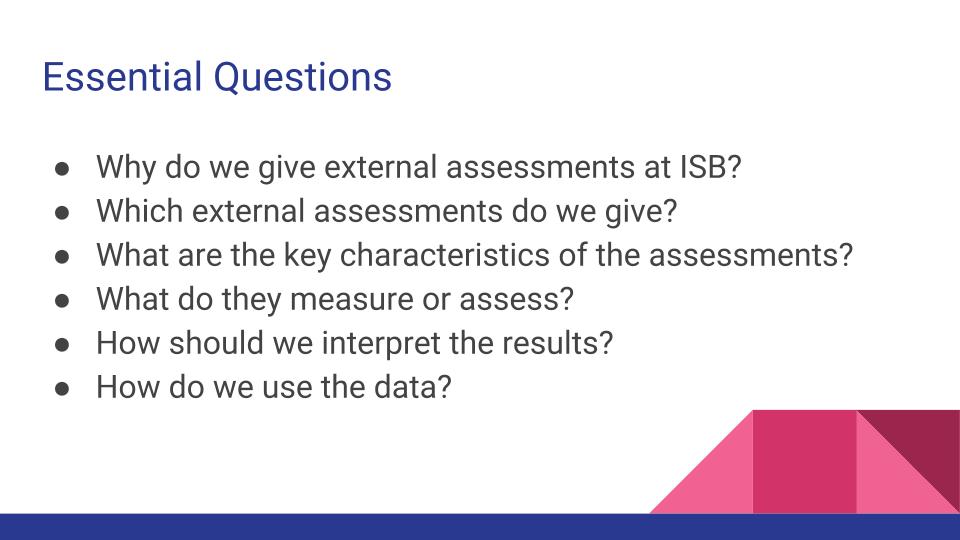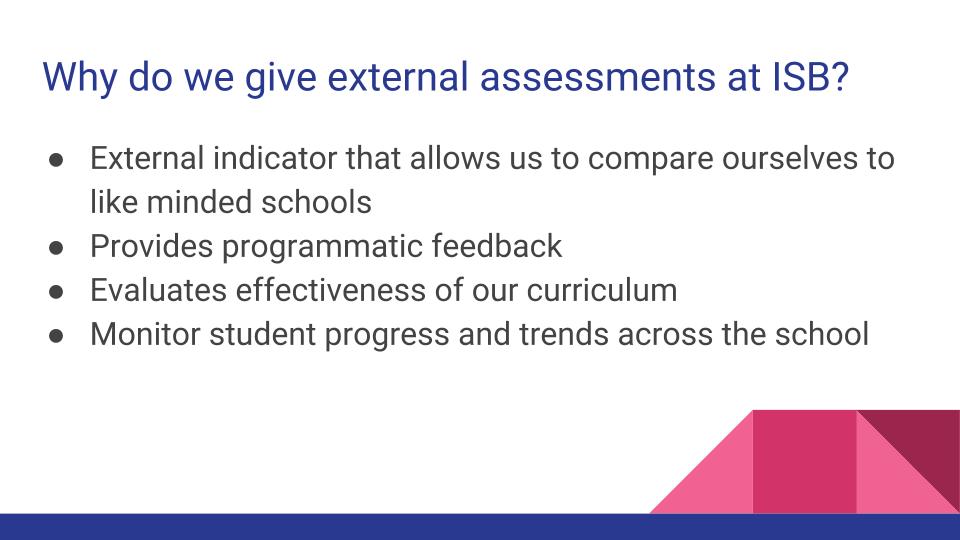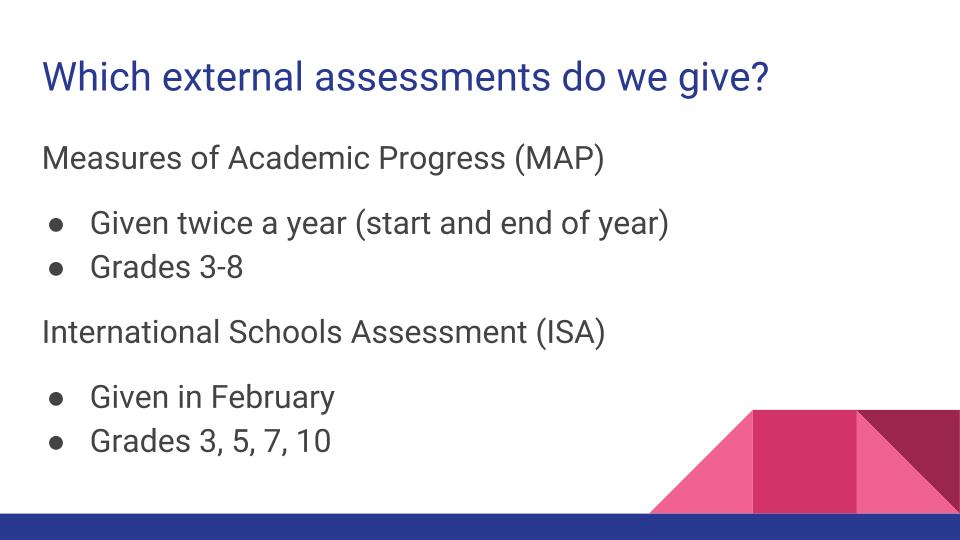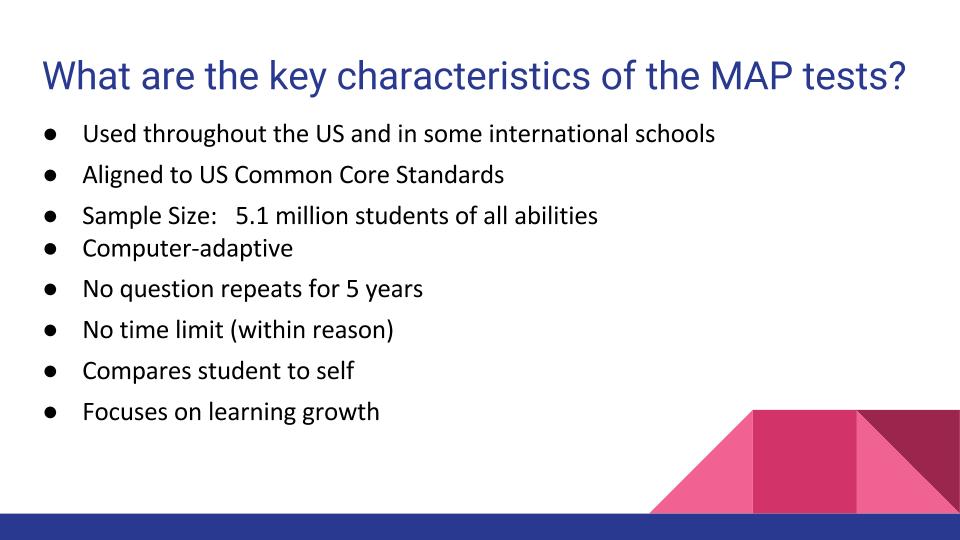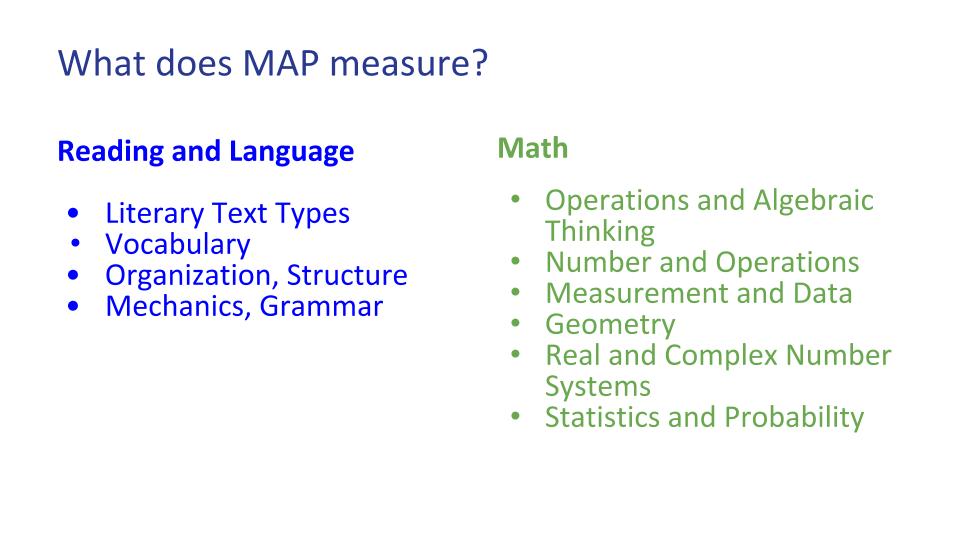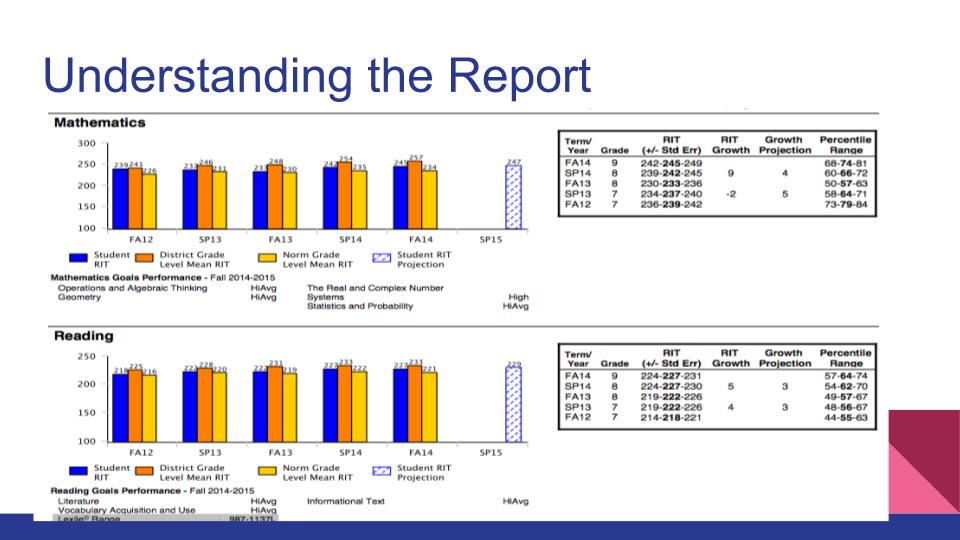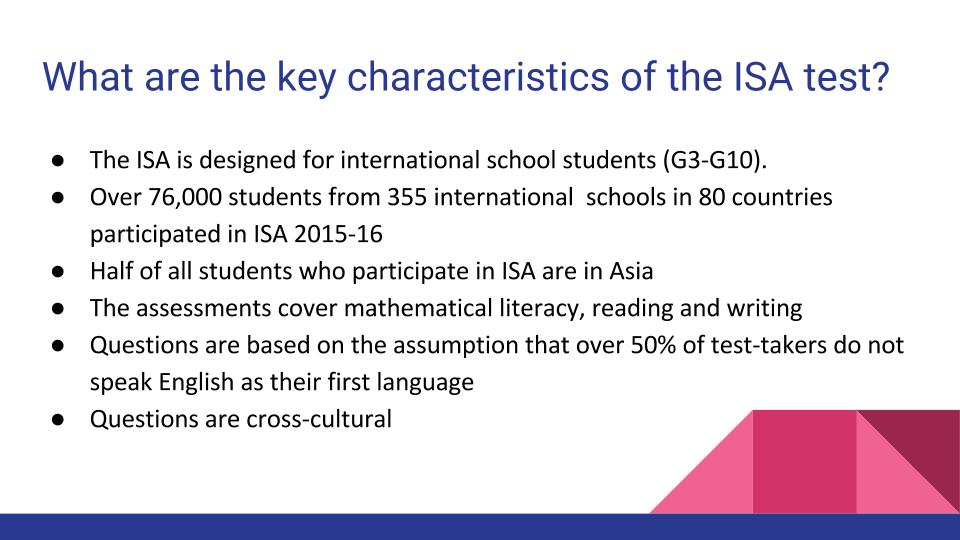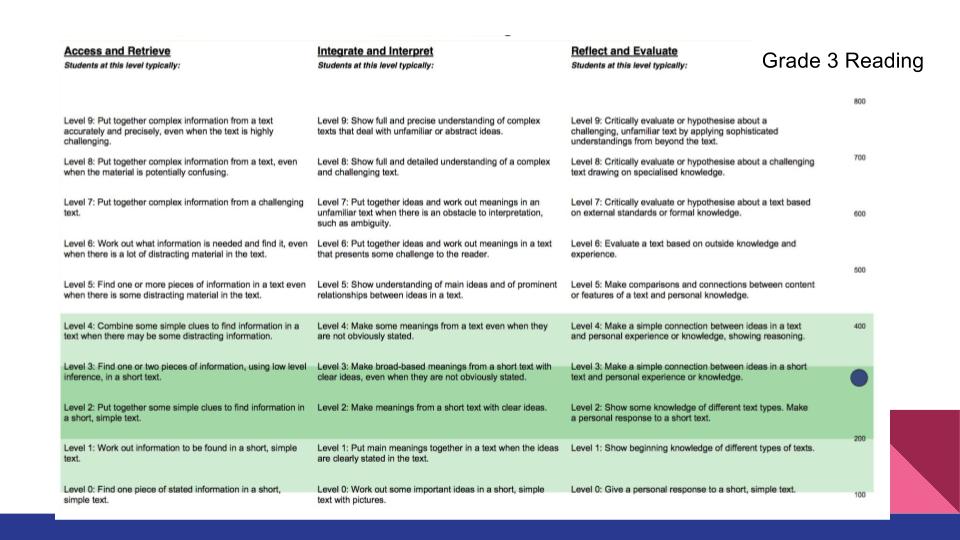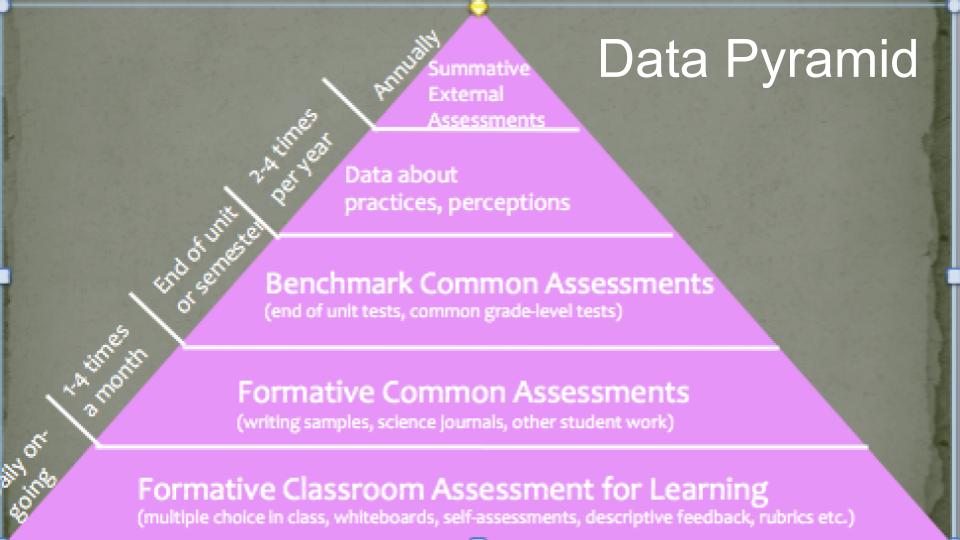Understanding the MAP and ISA Tests
by Dennis Harter
dennish@isb.ac.th
Last week ISB hosted a parent session focused on understanding the external assessments that are used by ISB, along with how to understand the scoring systems used by those tests.
The presentation included some slides that don’t make much sense without the context, so this article will present the key slides along with text to explain what the significant points.
We started with some the essential questions of our presentation.
We then discussed the reasons we use external assessments at ISB. It’s important to remember that these “scores” represent ONE assessment and snapshot of a moment in time. They are subject to how the child was feeling that day, whether other stressors existed, and usually have a wide band of error.
At ISB, we offer the MAP and ISA assessments at different grade levels:
The key characteristics of the MAP test are:
The MAP tests, published by the NWEA, tests in Reading and Mathematics.
After all students have completed the computer based test, a score report is made available to students/parents. The report includes both a RIT score – a measurement indicating point totals from questions answered correctly based on their level of difficulty – and a Percentile – the percentage of which a students fared better than other test takers (for example 83rd percentile means 82 of 100 students scored lower than this student).
Also helpful in understanding the report are the projected growth vs actual growth. The projected growth represents what growth typically happens for scores at this level. It is worth noting that the RIT scores have a band of error on either side which can have quite a large range.
We also offer the ISA test, which is developed by ACER in Australia. This test is taken by ISB students in grades 3, 5, 7, and 10. In grade 10, the results can be compared against the well-known PISA test which is taken to compare countries’ education systems around the world.
The ISA assessment includes testing in Reading, Math, and two forms of Writing (narrative and expository).
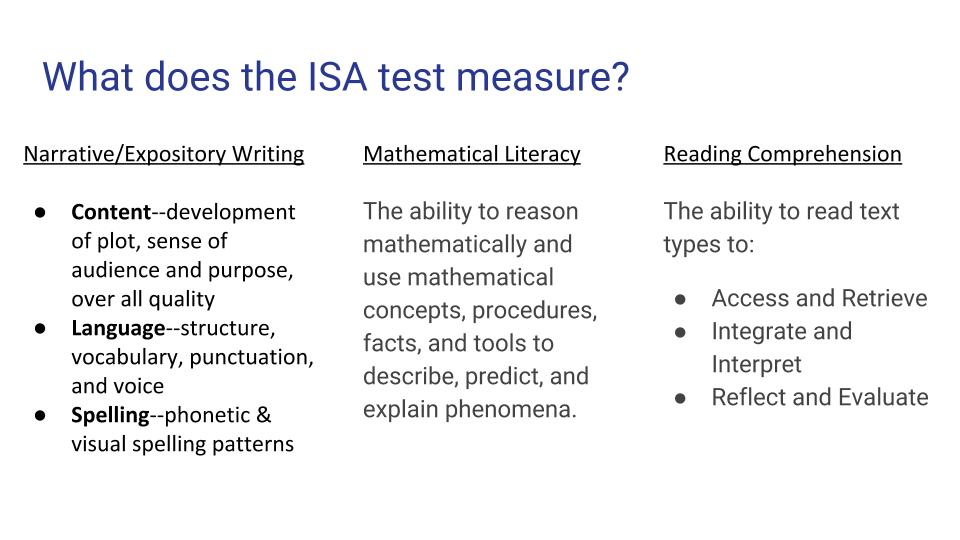 The ISA score report provides a dot where the student scored along with two bands of color. The darker band represents the range for which the middle 50% of scores fell. The lighter band represents the range for the middle 90%.
The ISA score report provides a dot where the student scored along with two bands of color. The darker band represents the range for which the middle 50% of scores fell. The lighter band represents the range for the middle 90%.
ISB uses these external assessments as a gauge of program. The individual scores also provide us with a single data point about the child at that given time. In the diagram below, you can see where external assessments fit in the larger scheme of evaluating a student’s attainment.
It’s important that we remember that external assessments are only one data point. Students learn and develop at different rates and in different ways. The external scores represent a very specific moment in time, as well.
If you have further questions about the MAP or ISA tests, please feel free to contact your divisional administration.
MS Principal’s Forum
by Dennis Harter
dennish@isb.ac.th
This week we hosted the MS Principal’s Forum. Please see the video below (it cuts off at the very end, but we were near finished at that stage).
In addition to the topics covered in the video, one question surfaced leading up to the forum that can be answered in writing. The question was around the conflict of times for MS after school activities.
MS activities tend to run on Monday, Wednesday, and Thursdays. This is due to facility and faculty constraints. On these three days, facilities for sports and activities are available to MS students from 2:30 until 3:40 pm, while high school programs start officially at 3:40 pm. On Fridays, the high school starts earlier, immediately at 2:30, in order to be done earlier on Fridays and get students on the road on the busiest of traffic days. On Tuesdays, all teachers are in professional development meetings with their schools, colleagues, and/or teammates. This dedicated time means that coaches are not available to work with student on Tuesdays until after 3:30, which means that MS activities can’t really run on Tuesdays.
The conflict that arises with only 3 days for MS Athletics and Activities is that many will run at the same time. Unfortunately, this forces students to make some choices each season, about what they want to participate in. While we would love to offer even more than we do, the reality of teacher and facility access forces some conflicts and therefore some difficult choices.
The following is the video captured from the MS Principal’s Forum from November 7, 2017.
Teacher Comments on Student Progress
by Cindy Plantecoste, Dean of Academics
As part of our communication timeline with parents, and in an effort to keep you up to date on your child’s learning, teacher comments related to your child’s progress will be available for you to access as of today, Friday, November 10. Here is how to access the comments:
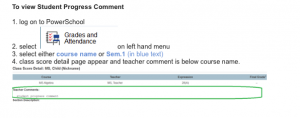 The comments are an important component of our learning feedback system as they specifically address areas of strength, areas to target for growth, and specific strategies that your child can take to demonstrate further progress. We encourage you to read the comments with your child so that you can engage in a rich discussion around his/her learning together.
The comments are an important component of our learning feedback system as they specifically address areas of strength, areas to target for growth, and specific strategies that your child can take to demonstrate further progress. We encourage you to read the comments with your child so that you can engage in a rich discussion around his/her learning together.

